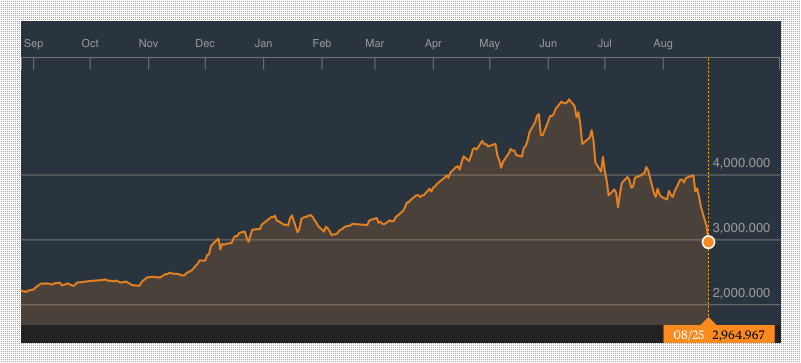In the last couple of weeks, emerging market stocks have fallen into a bear market.
Then on August 21, the Dow Jones Industrial Average experienced its biggest sell-off, and first 10%-plus correction, since 2011.
That was followed by a global plunge in stock prices on August 24. What’s unnerving investors?

The negatives include the Greek debt crisis, China’s economic slowdown, the bust in commodity prices, competitive devaluations in Asia and political instability in Brazil.

Volatility is Normal
Now is a time for a little perspective. Here are some issues to think about about.
First off, keep in mind that the US stock market has been unusually calm in recent years.
That makes downward swings of 2% or even 5% seem shocking, but they are not in a historical sense.
Obsessing about short-term market declines may distract you from your long-game: A properly diversified portfolio should be able to ride out the storm.
China Syndrome
Secondly, don’t give into the temptation to dump your equity holdings, figuring a bear market is round the corner.
Nobody can predict whether that will happen or not.
Also, the US economy is pretty robust compared to Europe and Asia.
This downturn is really about China, which is struggling with a debt overhang and downturn in manufacturing and exports.
While that’s bad news for Asian economies like Taiwan, South Korea, Vietnam, Malaysia and Japan, it is not a disaster for the US.
“Exports of all goods and services that the U.S. ships to China amounted to 0.9% of U.S. GDP for all of calendar 2014, with two thirds of that being goods and one third being services,” according to Morningstar.
Portfolio Adjustments
If you have a well-diversified portfolio in place and aren’t too exposed to emerging market risk, the wise thing may be to do nothing.
If not, it might be time for some mid-course adjustments when markets start to calm down.
Talk to your adviser about spreading out the risk more across your portfolio.
Do you have enough cash, exposure to large and small cap stocks alike, and what about fixed-income products like bonds?
Long Game
Finally, most Wall Street analysts are still relatively bullish on US stocks going forward.
In fact, a correction may be an opportunity to buy.
U.S. stocks are trading at 24.9 times the average of their long-term, inflation-adjusted earnings, according to data from Yale University economist Robert Shiller.
That’s above a 30-year average but down from 27 in February.
Also consider this: The S&P 500 will rally 12 percent to 2,233 by year-end, according to the average estimate of Wall Street strategists surveyed by Bloomberg.
Takeaway
Nobody has a crystal ball of course, but bouts of market volatility are to be expected.
The recent, sharp declines around the globe don’t necessarily mean we are going to experience the wealth destruction of the 2008 global financial crisis.
Stay focused on what you can control. Is your portfolio diversified as it needs to be?
Finally don’t forget this: The current bull market is more than six years old and stocks don’t rise forever.
Photo credit: Glenn via Flickr Creative Commons


